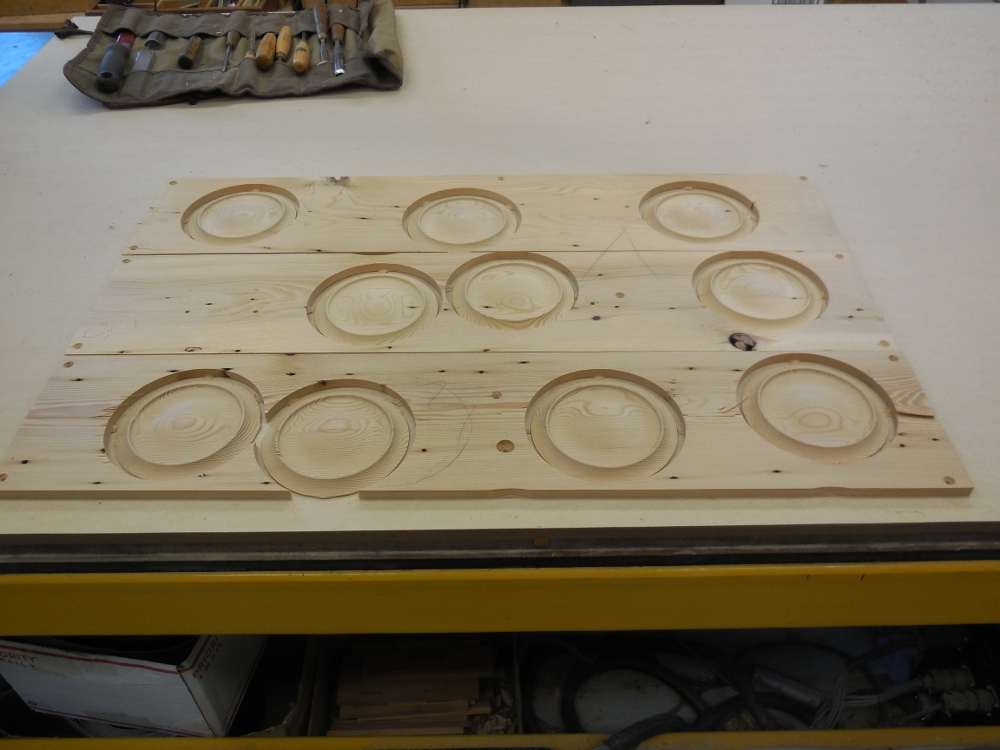Combining Machine and Hand Carving
/I was asked by my former employer to make a sample "medallion" or carved rosette for a kitchen in one of their projects. At 5 1/2" diameter, this might typically be turned on a lathe, but the material was recycled hemlock boards. Brittle and ornery, it appeared to be a good candidate for shaping on the CNC router. If the sample was approved, 6 would be required. Cutting on the router would ensure all were identical. The finished surface was to be hand tooled to liven up the texture.
I was e-mailed a file containing a 3-D model drawn in Sketchup, a popular CAD (computer aided drafting) program. Because Sketchup defines curves as assemblies of line segments, the model had to be tweaked to include enough segments that my CAM( computer aided machining) program would recognize as circular arcs. I imported the model into Vectric VCarve, oriented it in the material, and defined rough and finishing toolpaths which were then massaged by a "post processor" that turns the toolpaths into code that can be run by my particular machine.
As this was my first attempt at working with a 3D model, the initial process took some time. The actual machining time was less than half an hour, while hand carving the resulting piece took several times that.
Several months passed before the client signed off on the design, and I was given the go-ahead to make half dozen more medallions. In the meantime, Vectric had released an updated version of VCarve that included a moulding toolpath. This allows the user to extrude a profile or moulding section along a line or curve, avoiding the complexity of 3D modelling and offering a shorter machining time in many cases.
I planed the ratty old boards I was given down to just over finished thickness and laid out the medallions as best I could to avoid nail holes and checks. The boards were screwed to the router's "spoil board", a sacrificial layer that can be cut into and resurfaced as necessary. The machining went fairly well, requiring only about 15 minutes per piece using a 1/4" diameter ball-nose bit with 10% stepover (offfset between passes). The weakness of the material led to chipping on several blanks. I wound up manually reducing the router's feed speed in the vulnerable areas, and got 7 useable medallions out of 11 blanks.
Once the tabs that held the medallions in place were cut and sanded away, the pieces were held in a lathe chuck for hand tooling. Hemlock is not a typical choice for carving and required care to keep tearout to a minimum. I used several gouges depending on the degree of curvature in various areas, and honed frequently.
The finished carvings will be glued to a diamond shaped solid wood plaque that is held to a veneered panel with slotted fasteners to allow for seasonal wood movement. The panels, edged with a border moulding, will be doors in the island of a kitchen, in the main house of a multi-structure, 2 or 3 year building project on Lake Champlain.
Machined blanks on the spoilboard
Medallions located to minimize defects
straight off the router
Chip-out in weak area
Hand tooling with #3 gouge, chuck and carving vise
Completed piece
Sample door








